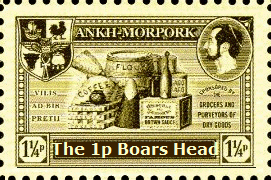|
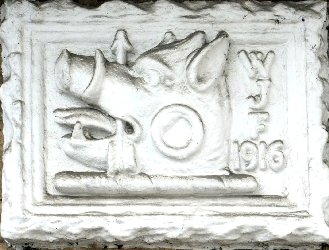
This issue, from the Year of the Three Roses, is another that can offer the specialist a bit of a challenge. It features the boar`s head arms of Sto Helit. The motto, Faber est Quisque Fortunae Suae, translates to (each man is) the architect of his own fortunes. The is close enough to a quote of Appius Cladius Caecus, Roman emporer 340 BC-273 BC whose name live on in the Appian Way and Aqua Appia. The boar`s head is a common heraldic device symbolising hospitality or hunting prowess. This plaque is in a wall in the village of Hampton-in-Arden, and I immediately thought of this stamp when I saw it.
The stamps are in an engraved style and for this reason the printing was handed over to Cripslocks, rather than Teemer & Spools. The complications with this stamp are that there are two sports, neither being on the regular sheet and were LBE-only, there were two different stamp sizes, two different papers, and a range of shades or rather intensity of printing can be found.
The sports were printed on sports-only sheets in alternating columns of the two. One sport has the p of 1p leaning backwards, while the other has the rivets above PO of Postage illuminated from the bottom right rather than the top left. All sports will probably be from a single print run, as being LBE-only the numbers required will have been decided prior to release. This print run would be likely to be done at the same time as the first larger stamp printing.
|
The Common |
The lazy P sport |
The rivets sport |
|
Bottom row from the Sports only sheet (looking a bit washed out) |
|
The stamps are either of a larger size 31mm tall and 24mm wide, or a slightly smaller 30mm by 23mm. This was achieved by scaling the image and making up a new sheet rather than reducing the borders size of the stamp. It was required because the original sheets of larger stamps had relatively small margins and this made them a bit harder to perforate. Reduction of the stamp size gave an extra 8mm to play with at the sides, and at the top and bottom. The sheet margin decorations and text were also shrunk. The small stamp is sometimes mistakenly referred to as a sport. It is NOT. It is a reprint. All stamps on the sheet are the same. In not one feature does is fulfill any requirement as a sport.
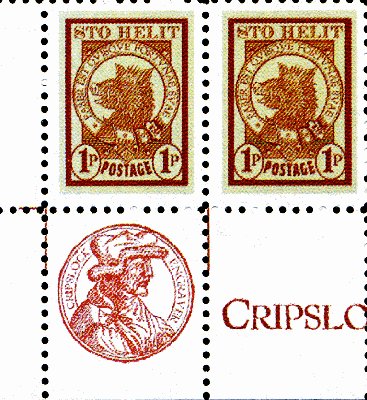 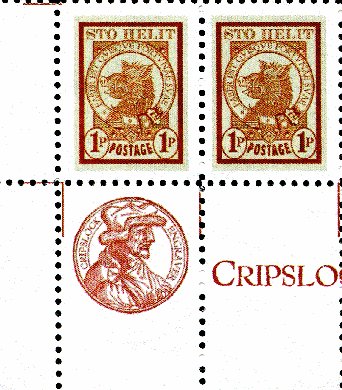
The large stamp (left) and smaller (right) showing the addition selvedge available.
The range of colour intensity ranges from quite deep colours to a quite pale printing. In general the deeper shades come from the early larger stamp printings. The palest large stamp must be printed on a different batch of paper because the gum surface is much rougher to the touch.

A close up look at the print details might reveal differences in printing. While the sport and the two large stamp shade variants below are very comparable, the shade details on the small stamp is much finer which may explain the pale colours. The stamp with the different paper/gum also shows different patterning, but whether this is due to a different printer used or whether it is a result of the ink take-up is unknown; a bit more likely to be the latter.
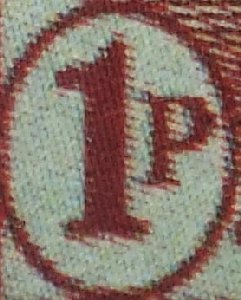 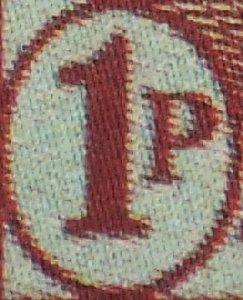 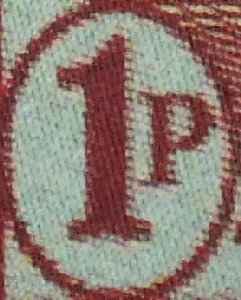
two shades of the larger stamp and the Sport (right)
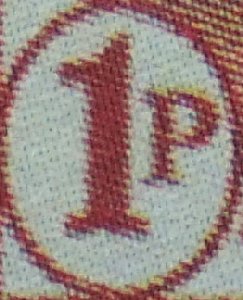 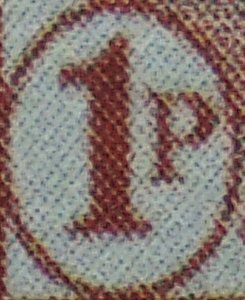
The small stamp (left) and the gum variant (right)
An early colour and design sheet of this stamp, held by the British Library, shows that originally it was considered as a brighter and redder stamp. It also was larger, with 42 as opposed to 64 stamps to an A4 sized sheet. The final issued stamp was taller for its width, with the belt surrounding the boar`s head being circular rather than oval. The artwork remains the same; just the colours and proportions changing between the trial design and the issued stamp.
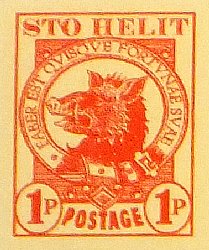 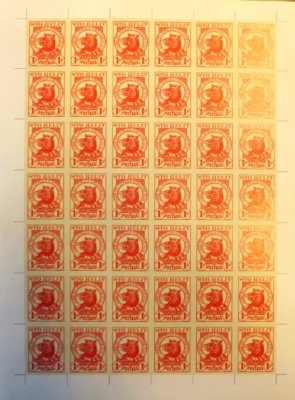
|


